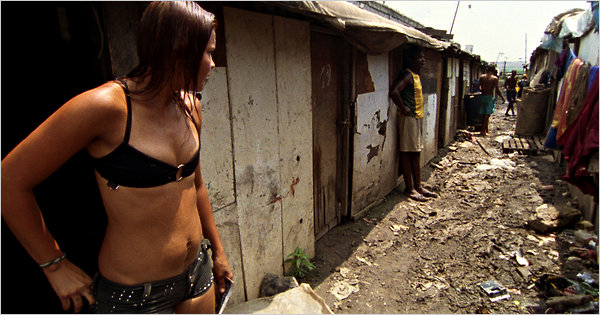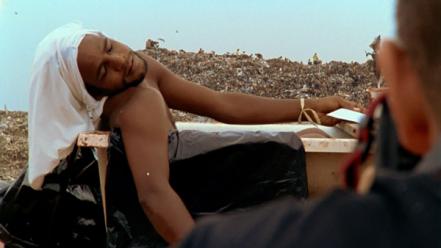
Film Review: Waste Land
Remember the myth of Sisyphus – story of a man whos condemned to push a boulder up a mountain, only to watch it roll down again. Its alive and well in Brazil, not too far from the beautiful bodies on Ipanema.
In Rio de Janeiro, the garbage dumps that spill toward the ocean on the outskirts of the city are some of the largest in the world. As world records go, its not one to be proud of. They say the dumps are the only place where the poor meet the rich of Brazil – in their trash – and theyve given rise to an industry. Workers called pickers recycle 200 tons of reusable materials from these trash fields every day. Their wages are so low that they make the guerrilla recycling industry a business. These castoffs live in shacks made from castoff materials near the vast dump, which is euphemistically called Jardim Gramacho – Gramacho Garden.

Waste Land Director Lucy Walker. Photograph courtesy of Almega Projects.
This is probably not your grandmothers gated community.
Vik Muniz, the Brazilian photographer, grew up poor, although not as poor as the pickers. Yet he knows that his family wasnt more than an accident away from ending up in a place like that. In Lucy Walkers documentary, Waste Land, we see Muniz giving something back. He listens to the pickers, theyre often eloquent about their lives and about the environment, and he takes their pictures. The photographs end up in museums and auction houses.

Scene from Waste Land
Muniz is a sensitive portraitist – he can find beauty almost anywhere, and he can make art, literally, from trash, with the pickers help. But hes more than an aesthete. He finds dignity, and he helps it emerge from people who considered themselves invisible.
Hes also told a poignant story here, not just about life among the garbage, but about the talent in the pickers thats wasted, lost to society. But Muniz take a wrong turn when he has pickers strike iconic poses inspired by famous paintings. Their dignity doesnt need that kind of choreography. And it certain doesnt require affirmation from buyers at auction (at Philips Auctioneers) who may be thinking that theyre bidding on this seasons hot arte povera.
Theres a bigger question in Waste Land – can art inform the world about the pickers and their dignity and help change their lives even if its just in selling Munizs pictures and raising money for their organization. That, Im afraid, is another labor of Sisyphus, and Muniz is painfully aware that if change comes, it will be minimal and slow. But Wasteland is a start. It screened at the Aspen Institute on July 26th at Aspen Institute, after premiering at Sundance in January.
